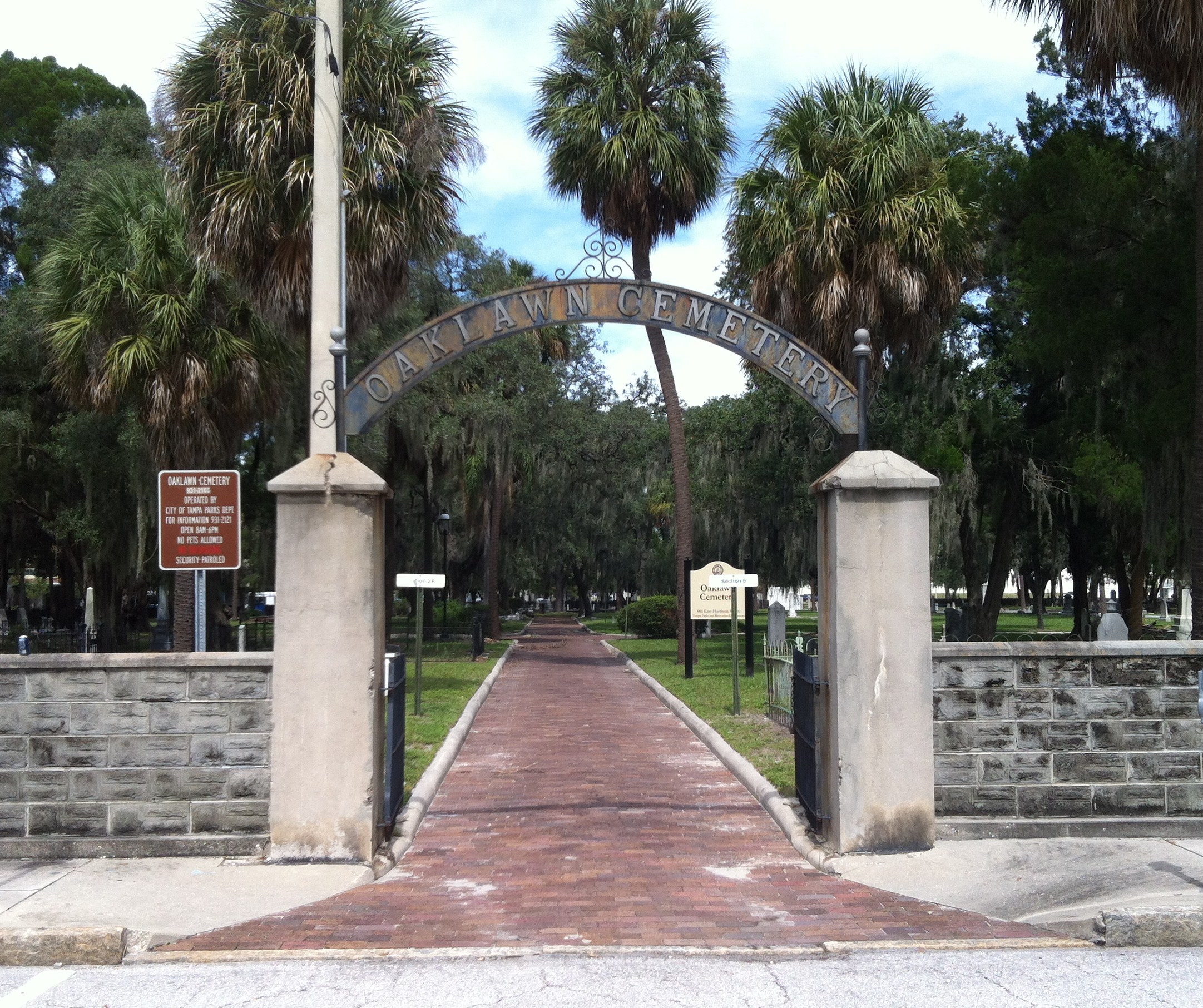Oaklawn Cemetary

CLIENT: City of Tampa (Oaklawn Cemetary & the Catholic Diocese of St. Petersburg (St. Louis Cemetary)
FOUNDED: April 1st, 1850
SIZE: Approximately 1,700 graves
PHOTO CREDITS: Findagrave.com
WEBSITE: Self-Guided Walking Tours of Cemetary
Tampa’s first public burial ground was declared Historic in 1976. The cemetary also ranks seventh in the nation in the number of Confederate soldiers’ graves. The fee to bury the dead in Oaklawn was once 2 1/2 cents a square foot per burial plot, on top of a $5 interment charge.
Some prominent persons buried here include:
Joseph B. Lancaster, Tampa’s first Mayor
12 other Tampa Mayors
A Governor of Florida
Two Florida Supreme Count Justices
Confederate Soldiers
Members of some of Tampa’s more illustrious, pioneer families; Vicente Martinez Ybor, the man for whom Ybor City is named, and who brought the cigar industry here from Key West and made Tampa the Cigar Capital of the World, is also buried here.
For a list of graves click here.
BRIEF HISTORY
[excerpt from Self-Guided Walking Tour of Oaklawn Cemetery]
Oaklawn Cemetery was created in 1850, when Tampa was a struggling town of around 500 persons. In the minutes of the Alachua County Commissioners meeting, Oaklawn was designated as a public burying ground for “white and slave, rich and poor.” Originally, most of the grave markers were wood (usually carved cypress), since stone for memorials necessitated an expensive combination of sail, steamship, and wagon transportation. (Tampa had no rail service until 1884.)
Unfortunately, wood markers were destroyed by fire, rot, and storms, leaving many graves without durable markers. Additionally, the original plat of the cemetery was misplaced after the Civil War, and the locations and identities of many early interments were lost.
At Oaklawn are buried many of Tampa’s pioneer families, thirteen mayors of the City, one Florida Governor, two Florida Supreme Court Justices, and the framers of five State Constitutions. A portion of the cemetery was set aside for slaves and “marginal” persons (such as pirates), and public monies were designated to bury indigents.
